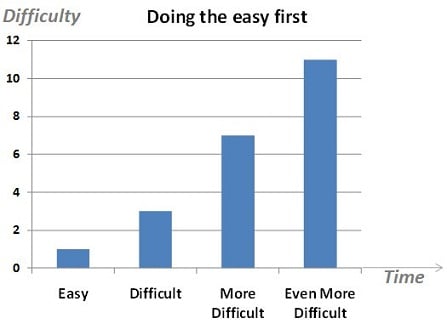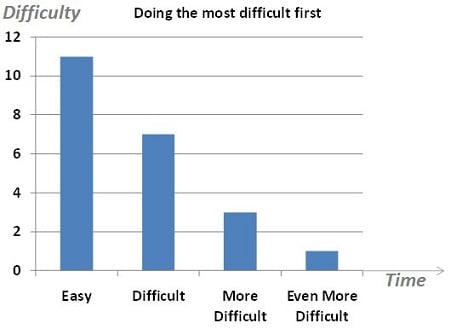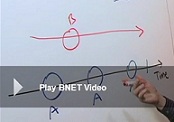 In my most recent interview at BNET, we got to work at the whiteboard again. I drew and explained how our mind works and how our own thoughts can be the biggest distraction of all, and then concluded with 3 specific techniques that can help us become better at staying focused, and also recovering quickly when our mind drifts into other unrelated territories or someone else interrupts our focus:
In my most recent interview at BNET, we got to work at the whiteboard again. I drew and explained how our mind works and how our own thoughts can be the biggest distraction of all, and then concluded with 3 specific techniques that can help us become better at staying focused, and also recovering quickly when our mind drifts into other unrelated territories or someone else interrupts our focus:
First Technique: Use a countdown timer
Not any timer – a countdown timer. Setting the countdown timer for 40 minutes (or whatever time period we choose) and then pushing the Start button has significant implications.
Just the fact that the timer is running seems to drastically heighten our awareness of time and allow us to quickly notice when we deviate from our task. It’s as simple as that. It is fascinating that such a simple and easy tool can have such an impact on our focus, but it does. Buying a countdown timer may very well result in the biggest return on investment that we can ever achieve!
Second Technique: Micro-Planning™ each 40 minute session
Creating a brief outline at the beginning of each 40 minute session listing key steps that we need to get done in order to complete the selected task can make the session as successful as it can be.
Ideally the Micro-Plan™ is handwritten in just a minute or two in the Notes section in the paper journal (described in the Accomplishing More With Less methodology).
Just like the timer, which appears to be a simple and perhaps expendable tool on the surface, Micro-Planning™ is a powerful technique that can help us stay focused, and if and when we have to deviate to take care of urgent issues, the Micro-Plan™ helps us restart our task with the minimum amount of effort and the fastest recovery time.
Third Technique: Turning Off External Interruptions
It sounds simple, and it would be if all external interruptions were within our control. Wishful thinking! Indeed, we can turn off the e-mail beep, forward the phone to voice mail, and indicate that we are busy or “away” in our Instant Messaging status, which we should do during our focus sessions. But it is much more difficult to switch off the people who stop by, the noise or conversations around our work area, and most importantly the urgent and critical requests that come from bosses, colleagues, customers, family and friends, not to mention the blame and guilt that come from not being available to handle all of the above promptly.
Staying focused in an ADD World--at the whiteboard
Additional Resources
- The complimentary Results Curve(tm) eBook download
- The Results Curve at Amazon.com
- 40-minute focus for breakthrough results--at the whiteboard







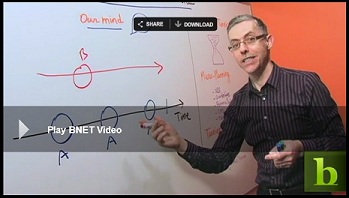
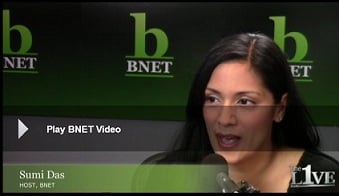



 Many people tell me that they dread coming back to work after having taken a few days off or gone on vacation because of e-mail! If you have taken advantage of the holiday weekend and took some extra days off, you may soon experience the same challenge. I experienced this previously when I found 1200 message in my inbox after a vacation, and here is how I dealt with them, applying many of the tips and techniques we teach in the
Many people tell me that they dread coming back to work after having taken a few days off or gone on vacation because of e-mail! If you have taken advantage of the holiday weekend and took some extra days off, you may soon experience the same challenge. I experienced this previously when I found 1200 message in my inbox after a vacation, and here is how I dealt with them, applying many of the tips and techniques we teach in the 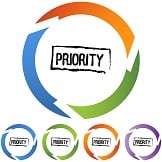 I couldn't have said it any better. "When everything is a priority, nothing is a priority" said my client today as I was shadowing him in order to better understand his organization's work process and tailor our training programs accordingly. Shadowing is such an insightful exercise. It allows us to take a look at what is under the hood; the nuances that make each work environment unique. It is a great learning for everyone involved; the observer, the one being observed, and everyone around them.
I couldn't have said it any better. "When everything is a priority, nothing is a priority" said my client today as I was shadowing him in order to better understand his organization's work process and tailor our training programs accordingly. Shadowing is such an insightful exercise. It allows us to take a look at what is under the hood; the nuances that make each work environment unique. It is a great learning for everyone involved; the observer, the one being observed, and everyone around them.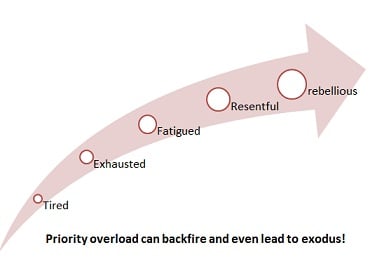
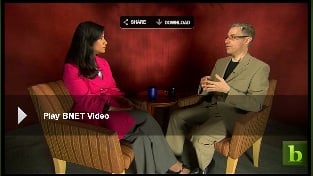
 E-mail messages, especially the not-so-easy ones, seem to sit in our inbox for a while before we finally take actions on them. We may agonize about them for days and looking at them dozens of times before we finally take the necessary action. By that time, it may be too late and we may find ourselves missing important windows of opportunities or critical deadlines and therefore needing to do some damage repair. Or even if it is not late, we still feel exhausted and guilty, having spent valuable mental and emotional energy without making much progress.
E-mail messages, especially the not-so-easy ones, seem to sit in our inbox for a while before we finally take actions on them. We may agonize about them for days and looking at them dozens of times before we finally take the necessary action. By that time, it may be too late and we may find ourselves missing important windows of opportunities or critical deadlines and therefore needing to do some damage repair. Or even if it is not late, we still feel exhausted and guilty, having spent valuable mental and emotional energy without making much progress.  Brian Solis & Deirdre Breakenridge in their book
Brian Solis & Deirdre Breakenridge in their book 